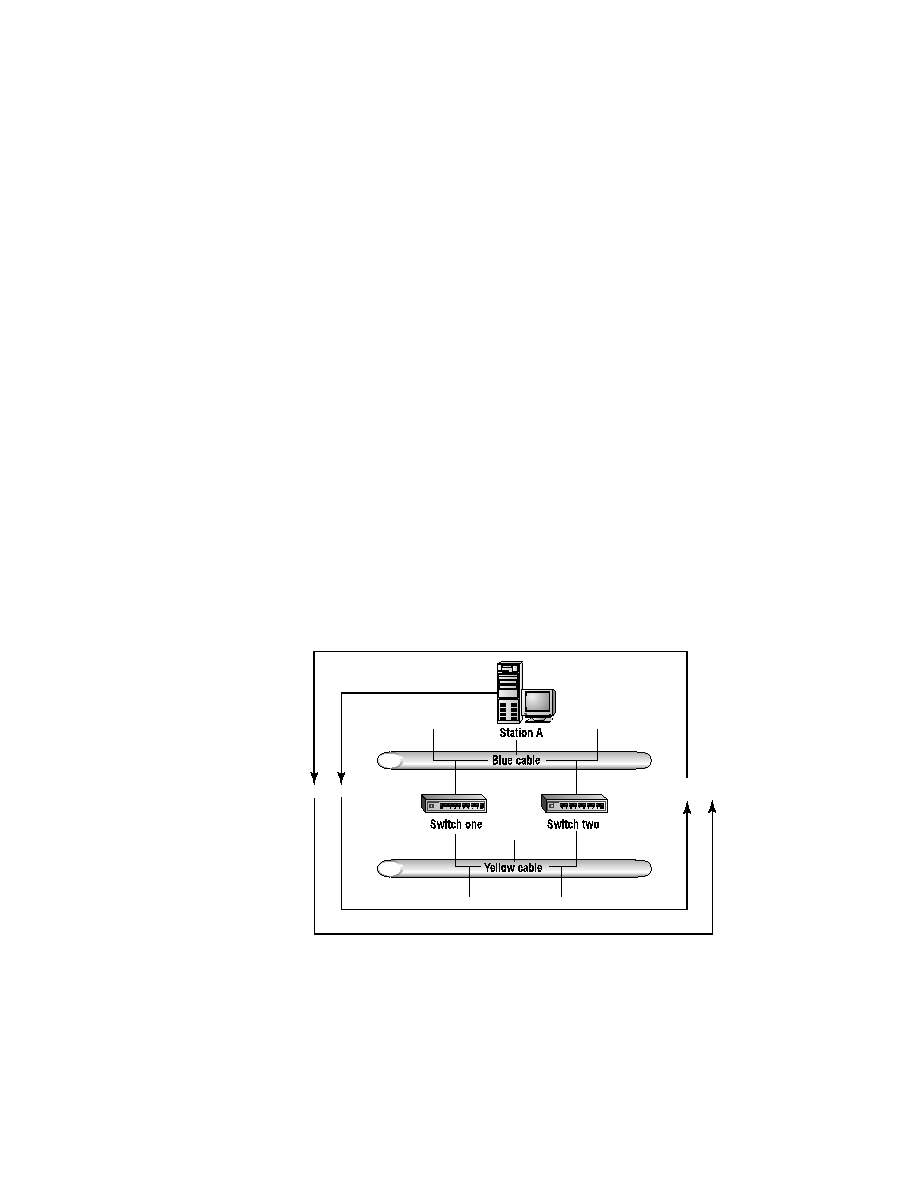
in any way, so a frame may traverse multiple bridges with no changes to the
frame. A changing frame provides indications that facilitate troubleshooting.
again that a bridge does not increment a counter--specifically, a time-to-live
(TTL) value--in the packet to differentiate frame A from frame A the seventh
time crossing the bridge. Such recurring paths can and should be controlled. The
most common method of control is referred to as spanning tree. The spanning
tree algorithm is defined in 802.1d and is used to control recurring paths among
multiple switches, thus avoiding loops in the network.
a loop can occur. This loop could theoretically take a single broadcast packet,
which a bridge would automatically forward, and then resend it hundreds of
times. Referring to Figure 11.1, Station A sends a broadcast. Switch One forwards
the packet to the yellow cable, and Switch Two sends the broadcast back to the
blue cable. Switch One then receives a forwarded broadcast packet that is in turn
forwarded to the yellow cable. This continues infinitely without some type of
intervention or control built into the software on the switch.